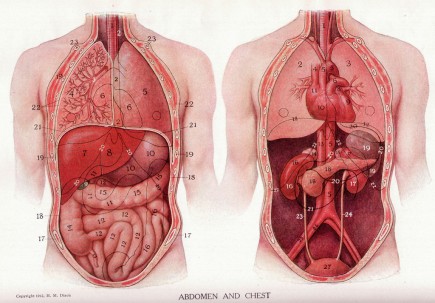Children often complain of abdominal pain while growing up from the very mild to the more significant complaints of pain. One of the most common diagnoses for a child’s abdominal pain is constipation. Having said this, when is your child’s pain a cause for concern?
For children old enough to relay the intensity of the pain, the degree to which they complain will guide when you take them in to be seen by a doctor. But for the younger child or infant, you will have to watch for signs and symptoms.
Cause for Concern
Knowing your child will also guide when to seek medical advice. For example, if your child has a high pain tolerance and then starts demonstrating symptoms that they are in severe pain: writhing, crying and screaming with pain, then you will know there is a cause for concern.
Symptoms of abdominal pain that are due to a serious/surgical cause are: severe pain, increasing pain, pain with vomiting that doesn’t allow the child to keep down any fluids for more than 24 hours, and blood in the stool or vomit. Additionally pain located in the right lower side should be considered appendicitis until proven otherwise.
Look at your child when they are in pain, are they pale, sweating or listless? Can you distract them form the pain? Do they swat your hand away if you try to touch their belly? If vomiting is occurring with the pain, has it been ongoing for more than 24 hours? Has the pain itself been going on for more than 24 hours *? If your child is vomiting, is it yellow or green (bile like)? Is the pain associated with difficulty or painful urination? If your child has diarrhea, has it lasted for longer than 72 hours? If you answered “YES” to any of these questions then it is time to have your child seen.
Continued Monitoring
What if your child was seen by a physician and given a benign diagnosis and symptoms persist? It is still important to monitor your child’s symptoms. If the pain continues to increase, your child then becomes lethargic or looks worse, then your child needs to be reevaluated by a doctor. Sometimes, early in the course of a disease like appendicitis, the diagnosis is not apparent form the start.
Let’s review the common surgical causes of abdominal pain so you are familiar with the symptoms: appendicitis, and intussusception. While urinary tract infections can be serious, they will not be reviewed here. The goal of the article is to highlight the most common serious causes of pain.
Appendicitis
Appendicitis is an inflammation of the appendix. It is a surgical emergency. Meaning, the affected child will need surgery to treat the condition or have adverse outcome. Symptoms of appendicitis are pain that usually starts at the belly button but later localizes to the right lower side.
The pain will increase in severity with time and will usually be associated with decreased appetite, fever and vomiting. Diarrhea is not a symptom associated with appendicitis and should prompt another diagnosis.
Appendicitis can affect anyone but it is rare under the age of 2 and most common from the age of 10-30. From the onset of symptoms to perforation (rupture), the approximate time is 48 hours. Even though stated above that abdominal pain lasting more than 24 hours is a cause to be seen: Do not wait 24 hours to have your child seen if you suspect appendicitis.
Intussusception
Intussusception is when the bowel telescopes in on itself causing an intestinal obstruction. This is also considered a surgical emergency if not reduced. In the majority of cases (in infants and toddlers), a cause is not identified. It occurs most commonly between 9-24 months of age and is rare over the age of 2.
The infant or child will have severe intermittent colicky pain and may draw their knees up into their abdomen every 15-20 minutes. In between pain episodes, the infant/child may be normal. As time goes on, the number of episodes will increase and a mass (described as sausage shaped) may be palpable. Blood and mucous in the stool resembling currant jelly may be noted.
This classic triad of pain, sausage shaped mass and currant jelly stool is only present in 15% of children with intussusception. Some studies show it is more readily treated by barium enema (avoiding surgery), if treated less than 48 hours after onset. Highlighting the fact that parents should not wait for 24 hours if this is suspected. Here is a link to more information.
Here is a video showing the classic colicky pain of intussusception. Note the child is guarding in the video. Guarding is when the child pushes your hand away when you try to examine them.
Still uncertain?
If you are still not certain call your doctor or seek treatment for your infant or child. I found this link, which will allow you to enter you, child’s symptoms to see if they need to be seen.
The child in the video is our daughter… I captured the video to show the ER physician how severe the symptoms were while we were waiting for him to return from attending a delivery. It wasn’t my initial intent to utilize the video for anything but a reference point. Hopefully by sharing it, it will prove to be of benefit to other parents. It is clear from the video that she had a “surgical abdomen’ even this early in the course. The video was taken after only 6 hours of pain. It is unfortunate that we had to return to ER two more times to convince the doctors it was indeed surgical.
Has your child ever experienced a serious cause of abdominal pain? How did I do on my first video?
Photo credit: perpetualplum
























Nicely done video Rajka! Credit to you for turning this terribly trying episode with your child into something that may help others (including other physicians) to recognize serious abdominal pain in a child sooner. THANK YOU for expanding to video on your excellent web site!
Thanks Dr “Ken”. I am hoping it is helpful!
Very helpful! Thank you!
Thanks Mia!